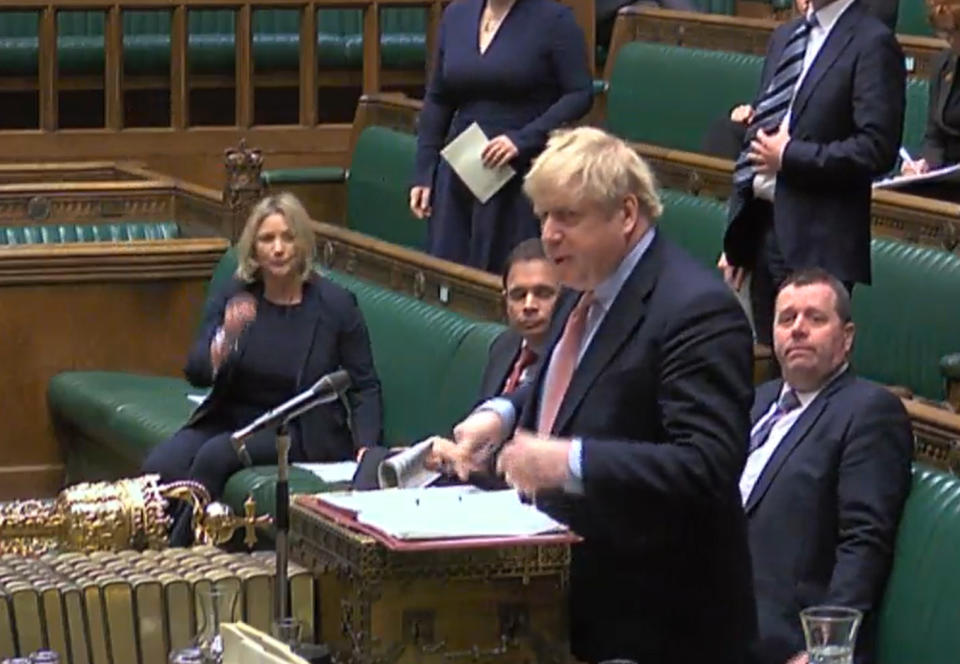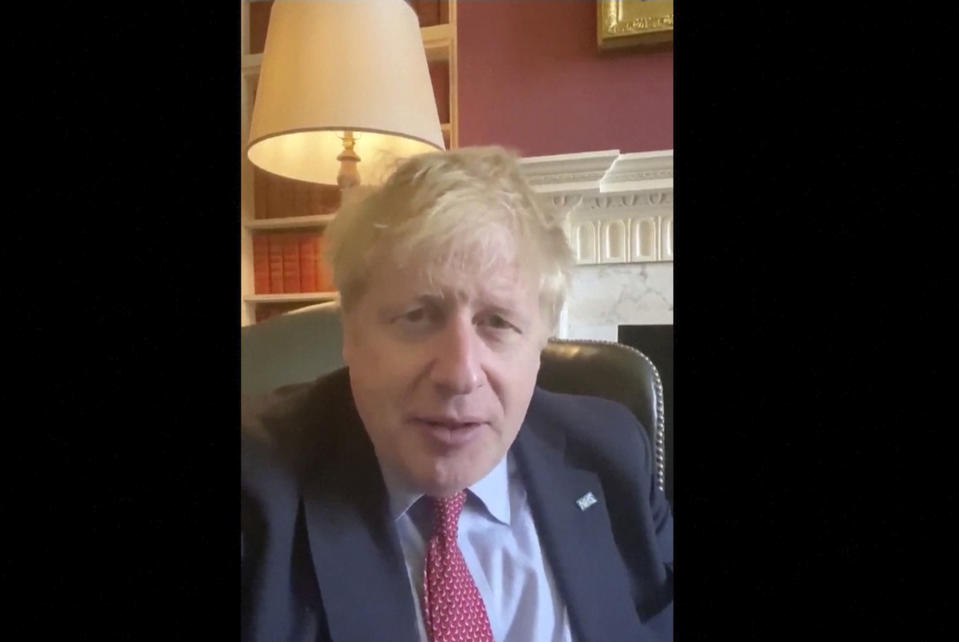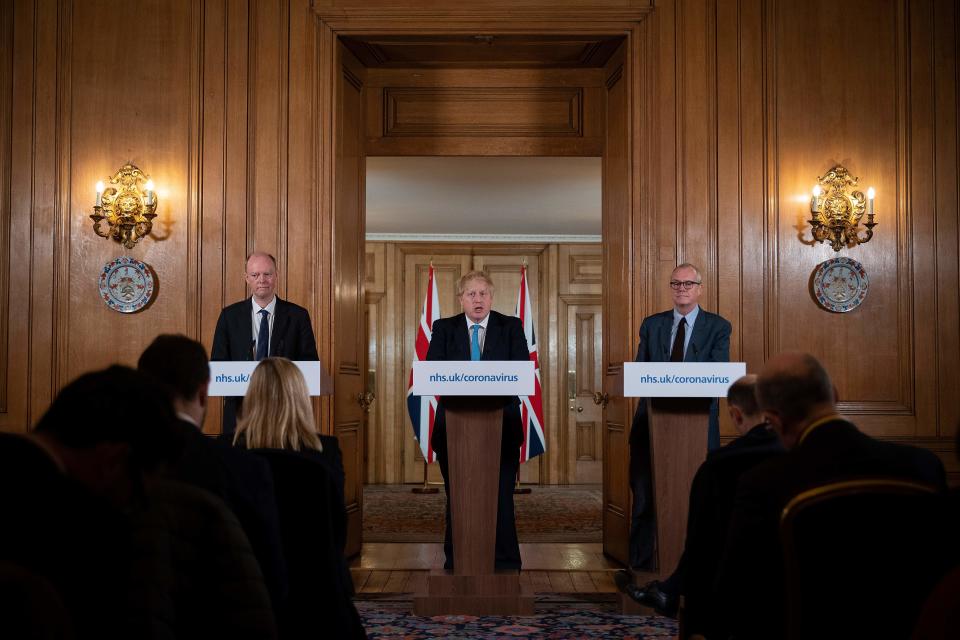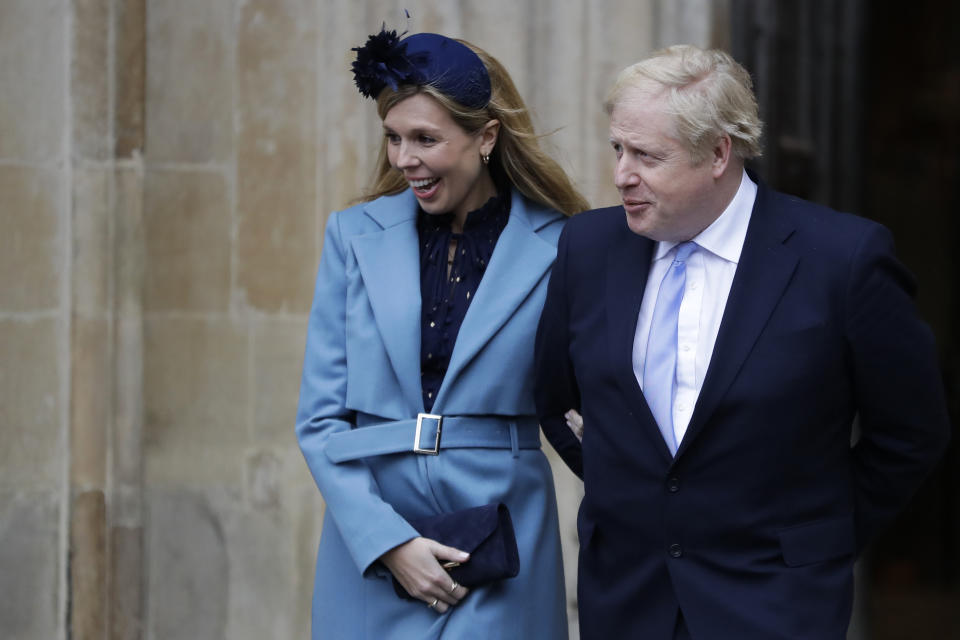Coronavirus: Eight questions answered about Boris Johnson's positive COVID-19 test
The UK’s coronavirus crisis took another dramatic turn on Friday as Boris Johnson announced he had tested positive for COVID-19.
The prime minister is the first world leader to get coronavirus and is now in self-isolation.
Here is everything you need to know about Johnson’s positive test, and the implications it has for the government’s coronavirus response.
1. Why was he tested?
Johnson said he had “developed mild symptoms of the coronavirus, that's to say a temperature and persistent cough”.
The symptoms were noticed on Thursday afternoon and Prof Chris Whitty, England’s chief medical officer, told him to take a test.
He received the positive results at midnight. As of 9am on Friday, Johnson was one of 14,579 Brits confirmed to have been infected.
2. When was his last public appearance?
On Thursday night.
Johnson joined the “clap for carers” NHS tribute outside Number 10, Downing Street. Chancellor Rishi Sunak also took part, with social distancing guidelines followed.
3. When was his last appearance in Parliament?
Johnson appeared in the Commons chamber for an hour during Wednesday’s Prime Minister’s Questions session.
MPs observed social distancing guidelines, meaning there were large gaps between members on the benches.

4. When did he last meet the Queen?
Sixteen days ago.
A Buckingham Palace spokesman said: “Her Majesty the Queen remains in good health. The Queen last saw the prime minister on 11 March and is following all the appropriate advice with regards to her welfare.”
Latest coronavirus news, updates and advice
Live: Follow all the latest updates from the UK and around the world
Fact-checker: The number of COVID-19 cases in your local area
6 charts and maps that explain how COVID-19 is spreading
5. Is he still working?
Yes.
Johnson said: “Be in no doubt that I can continue, thanks to the wizardry of modern technology, to communicate with all my top team to lead the national fightback against coronavirus.”

6. Where is he self-isolating?
Johnson’s spokesman said: “Number 11 in its entirety will serve as the prime minister’s office and his home – he lives above Number 11 in the flat.
“The doors between Number 10 and Number 11 have been closed off to all other staff who work in the building.
“The PM will work from the office and the study in Number 11, which has been kindly vacated by the chancellor [Sunak].”
Meals and work will be left at the door of Johnson’s flat.
7. Have his key advisers and cabinet colleagues been tested?
Johnson has conducted his coronavirus response with six key figures: Prof Whitty, chief scientific adviser Sir Patrick Vallance, Sunak, health secretary Matt Hancock, foreign secretary Dominic Raab and chancellor of the Duchy of Lancaster Michael Gove.
Shortly after Johnson’s announcement, Hancock also said he had tested positive for COVID-19 and would carry on working in self-isolation.
Gove has not been tested for coronavirus, his wife Sarah Vine said on Twitter. Vine said he has not shown any symptoms.

It is not known whether Prof Whitty, Sir Patrick, Sunak and Raab have been tested.
The PM’s spokesman would only say: “In Number 10 we have been observing the advice on social distancing.
“We have wherever possible been using video conferencing.
“We have been taking steps and following the same advice which we have given to the public.”
8. What does this mean for his pregnant fiancé, Carrie Symonds?
Downing Street suggested Symonds is not living with Johnson in Downing Street at present.
The spokesman said: “The prime minister of course follows all of the guidelines which have been issued by Public Health England in full.
“His circumstance is such that he will be required to self-isolate for seven days.”

Earlier this month, Prof Whitty placed pregnant women in the COVID-19 “vulnerable” group.
The Royal College of Obstetricians and Gynaecologists has said of this: “What has driven the decisions made by officials to place pregnant women in the vulnerable category is caution.
“We know that some viral infections are worse in pregnant women.
“At the moment, there’s no evidence that this is the case for coronavirus infection, but the amount of evidence available is still quite limited.”

 Yahoo News
Yahoo News 
